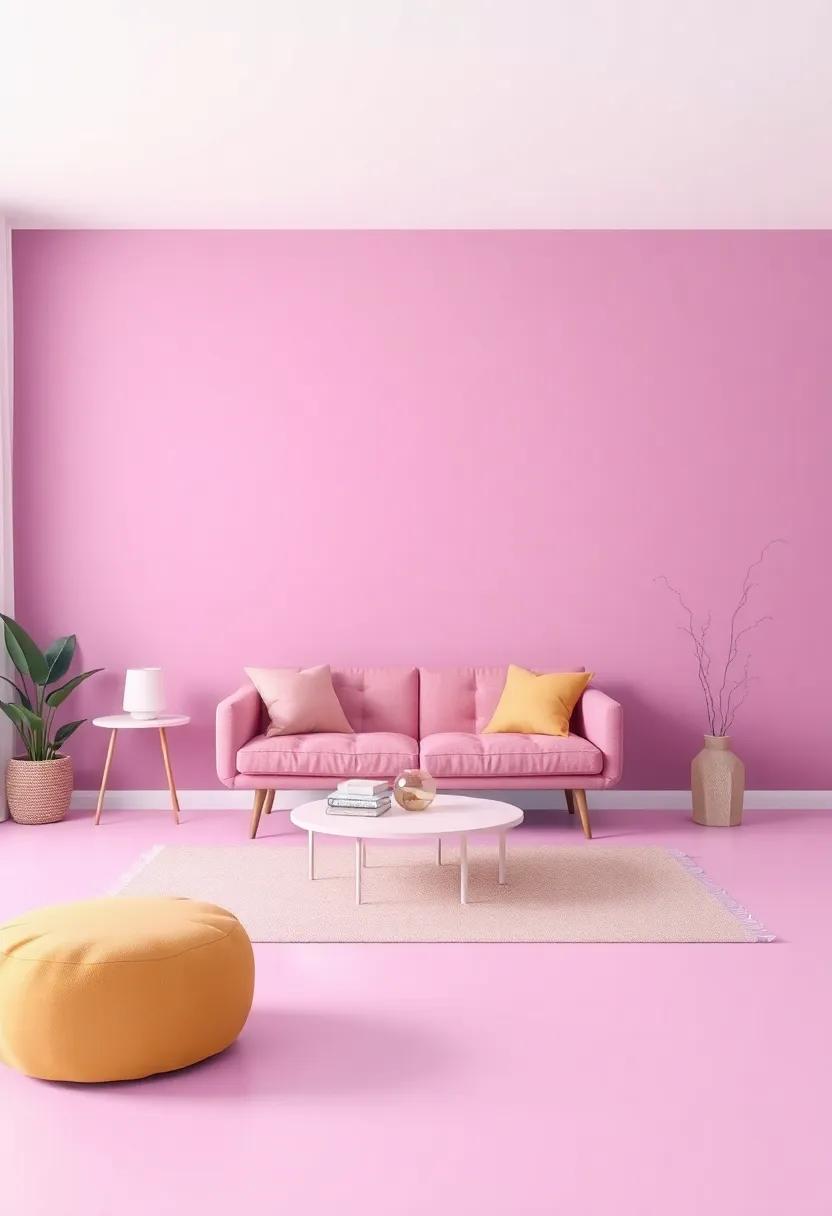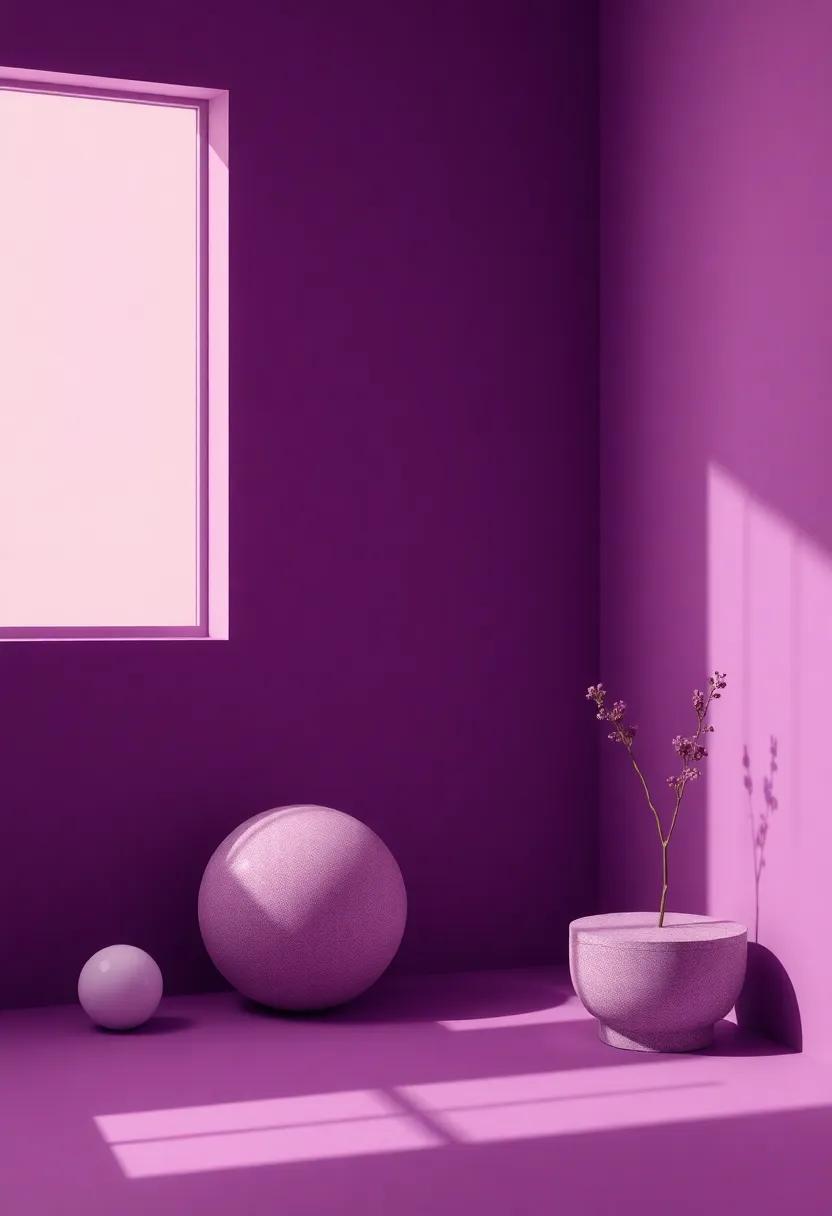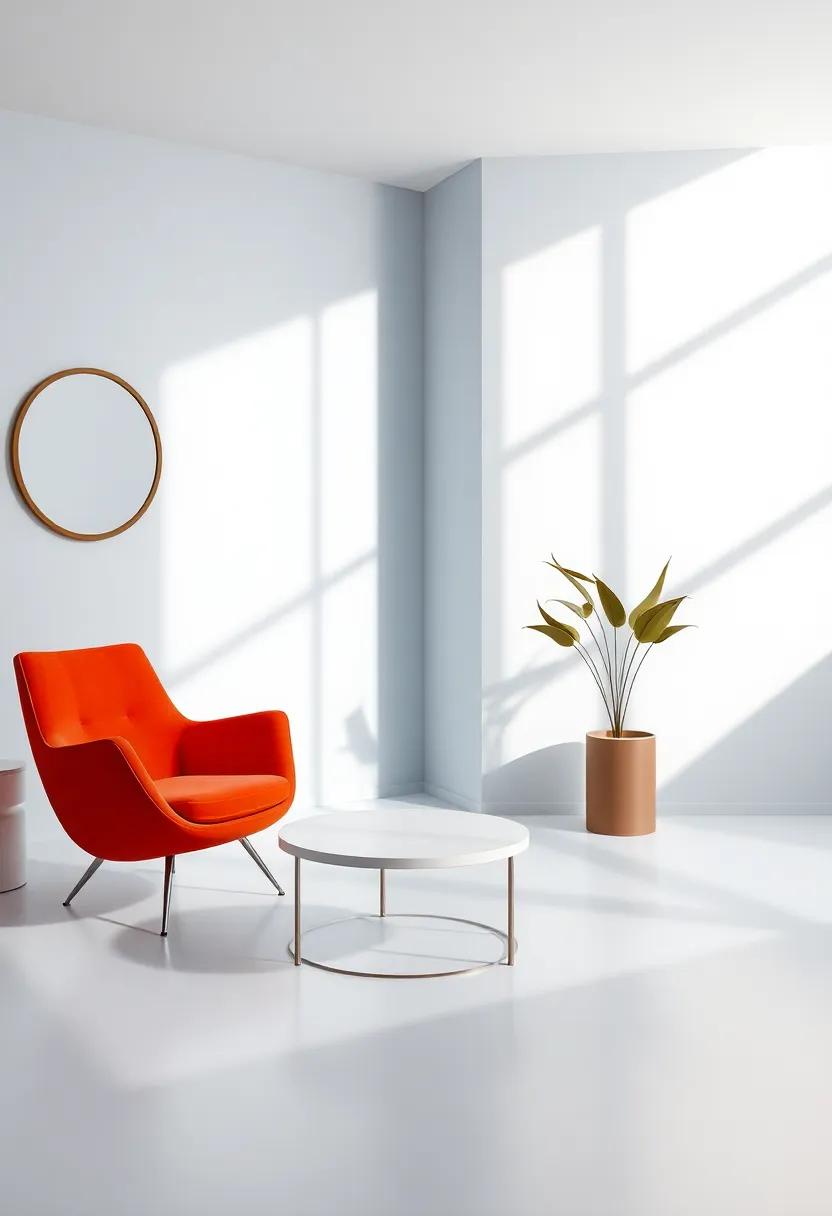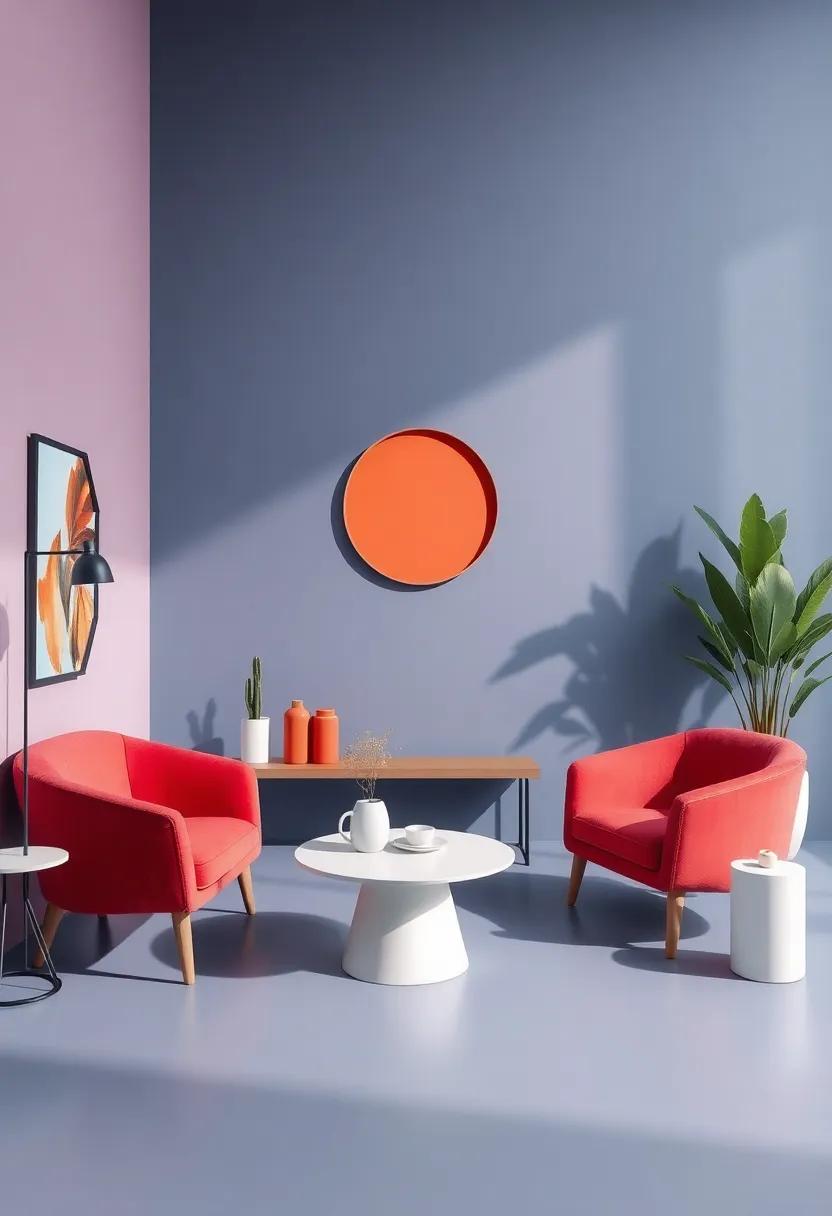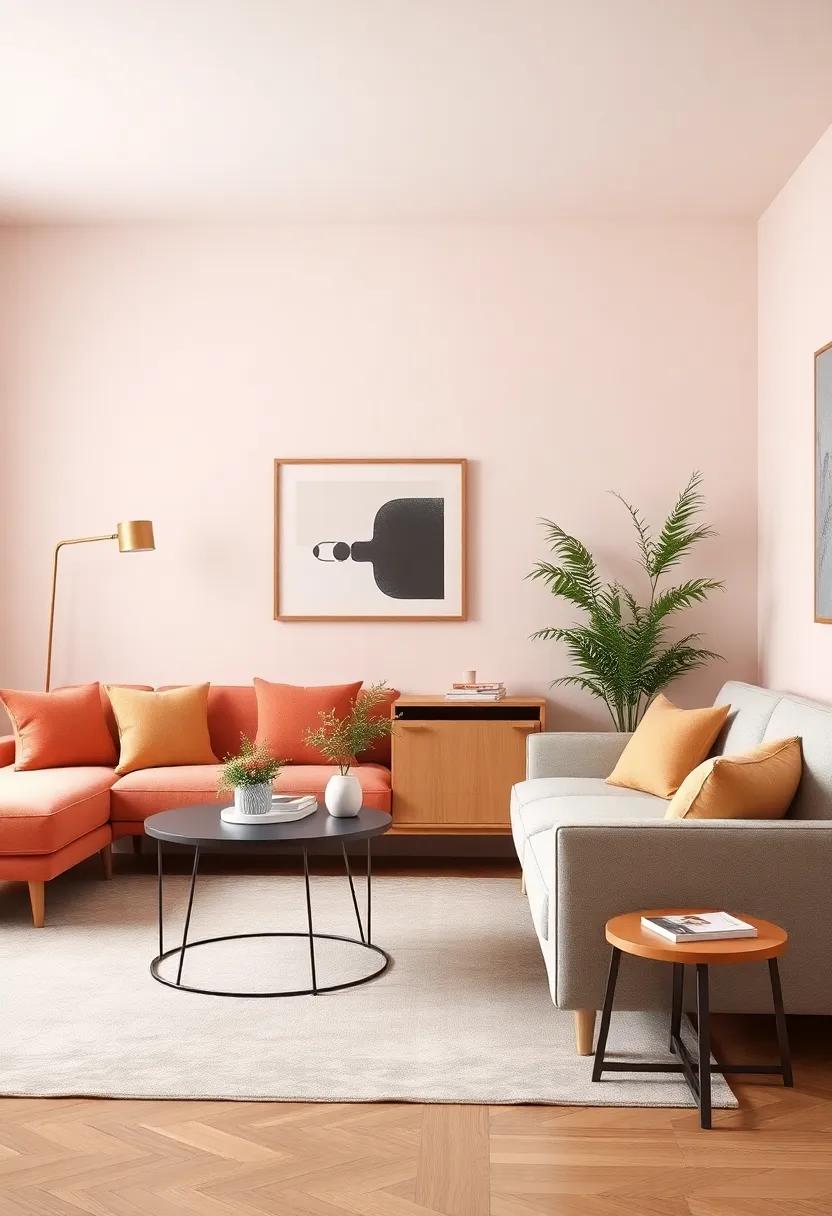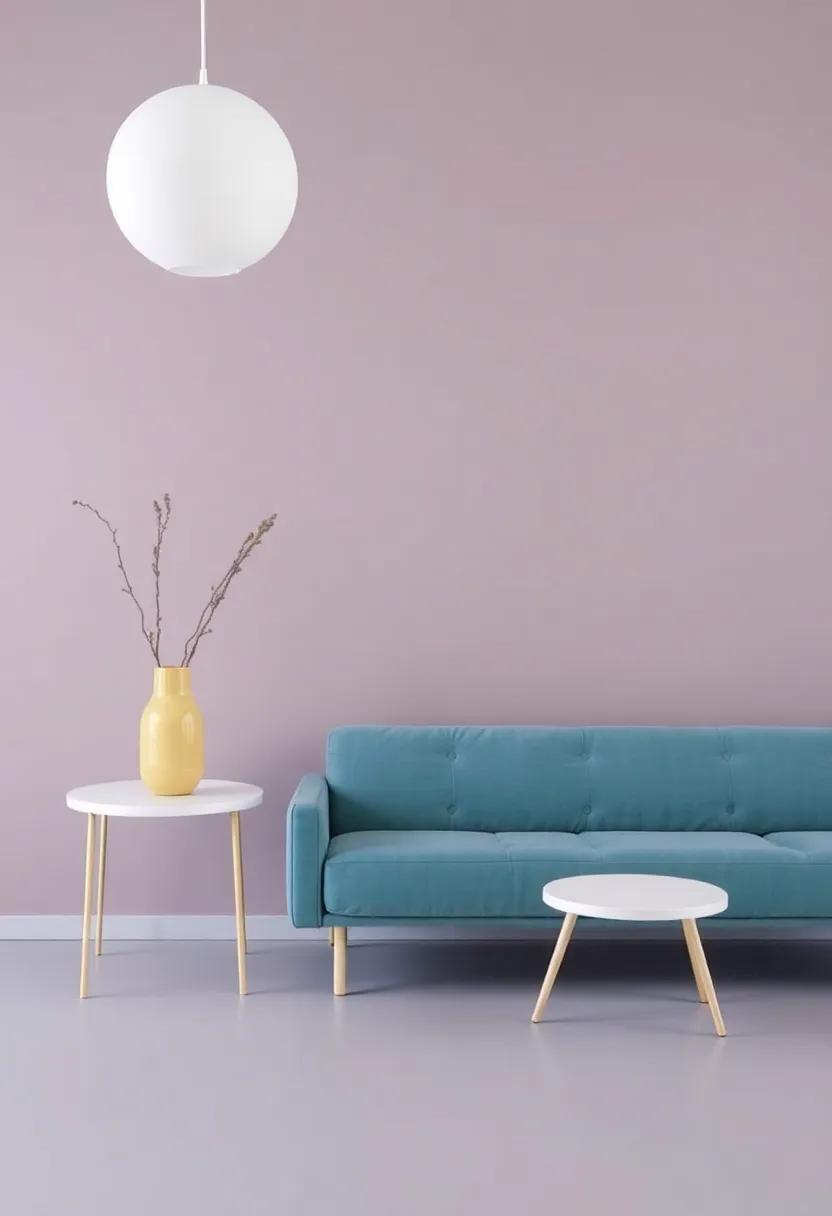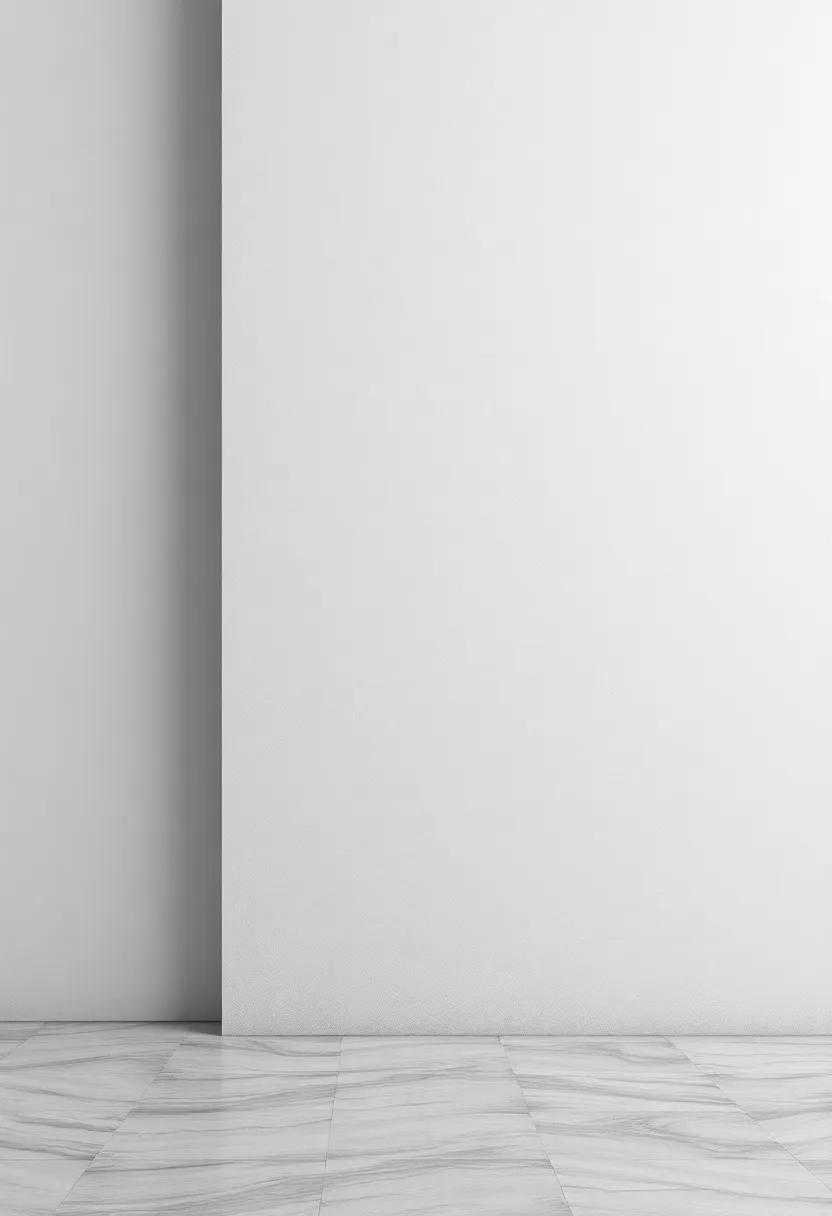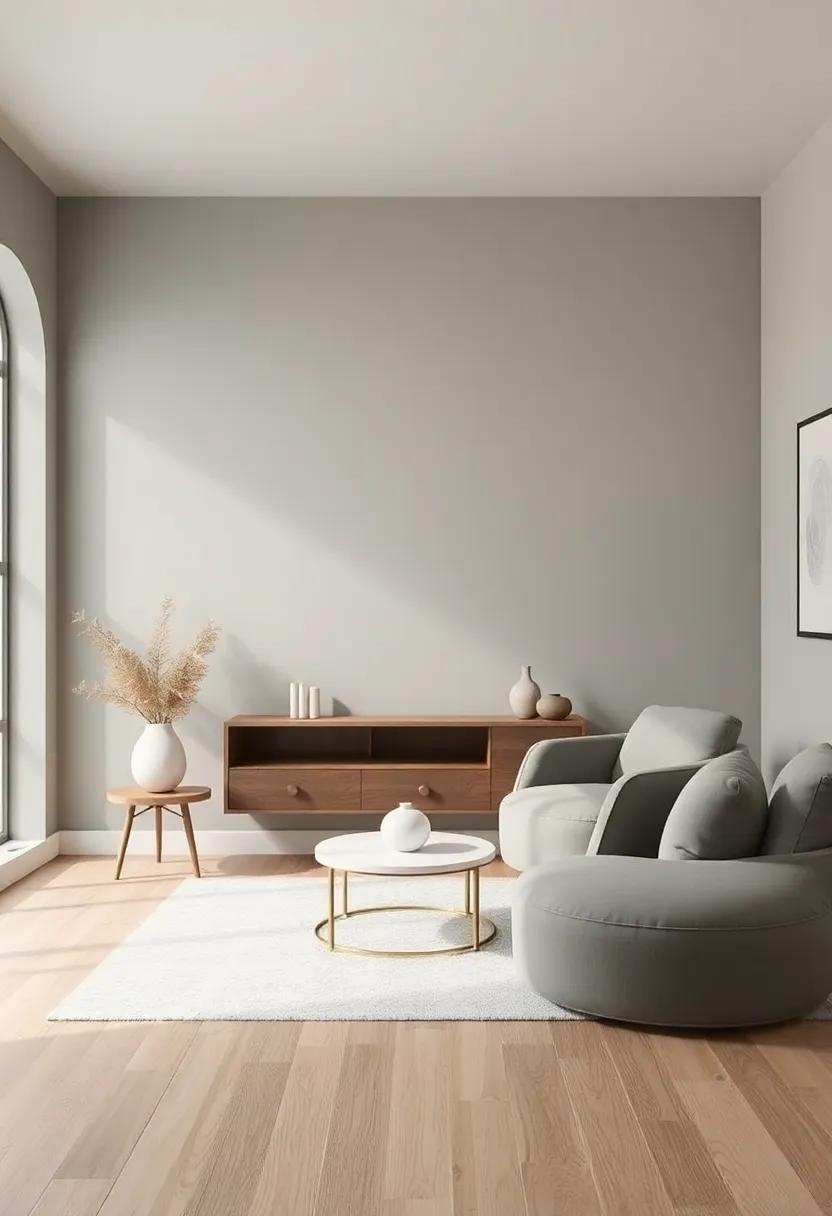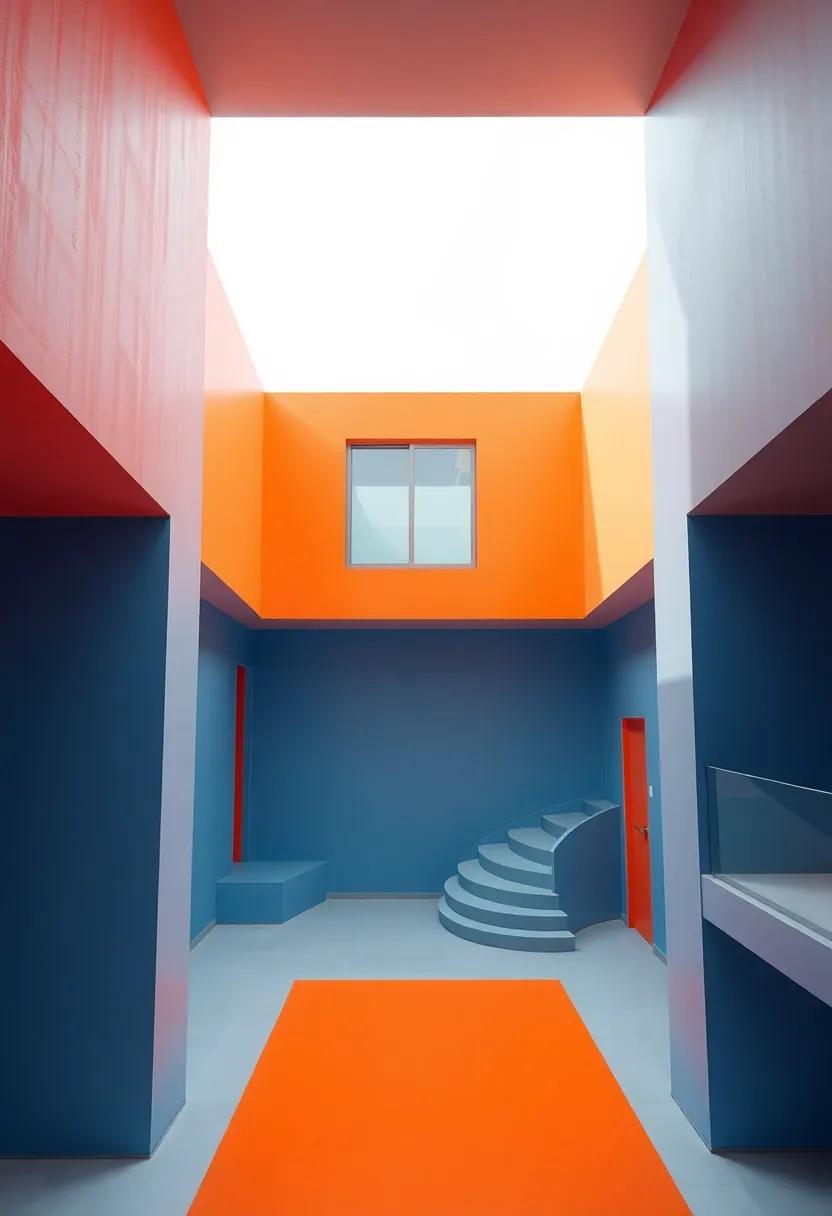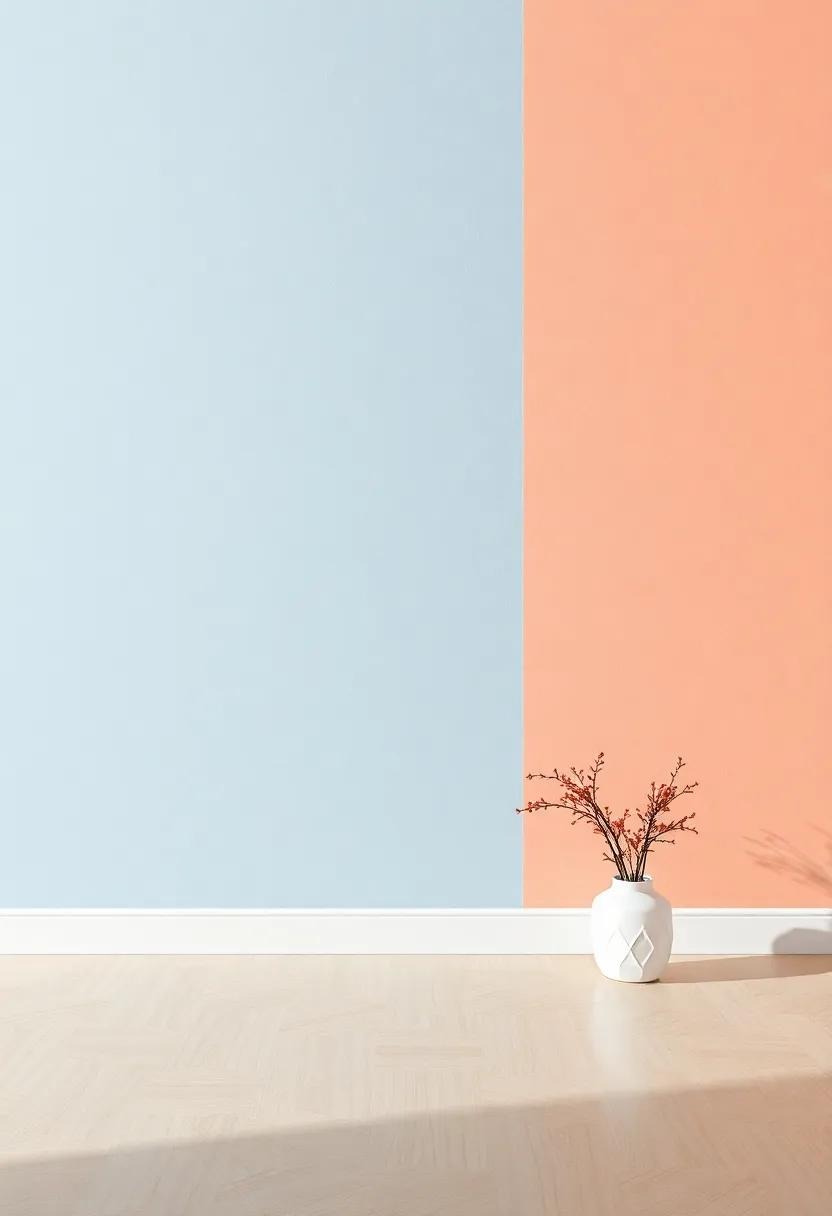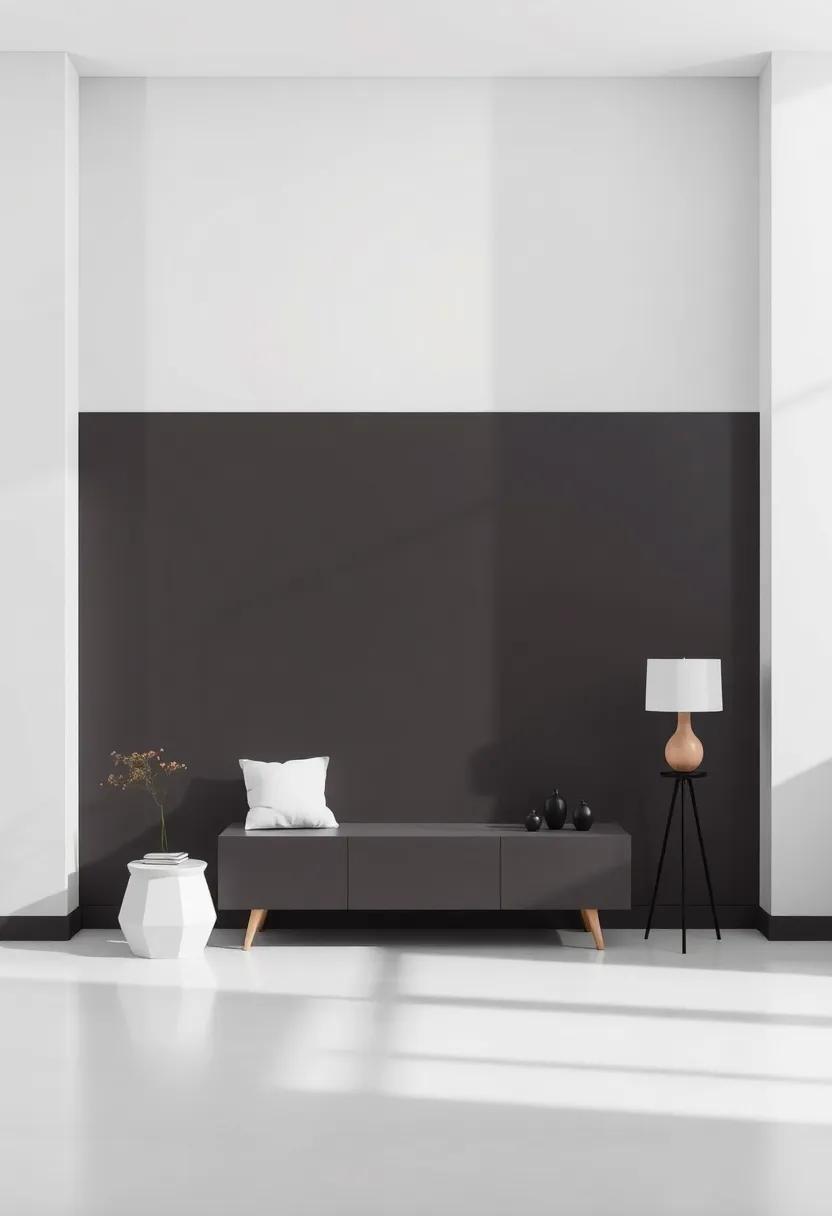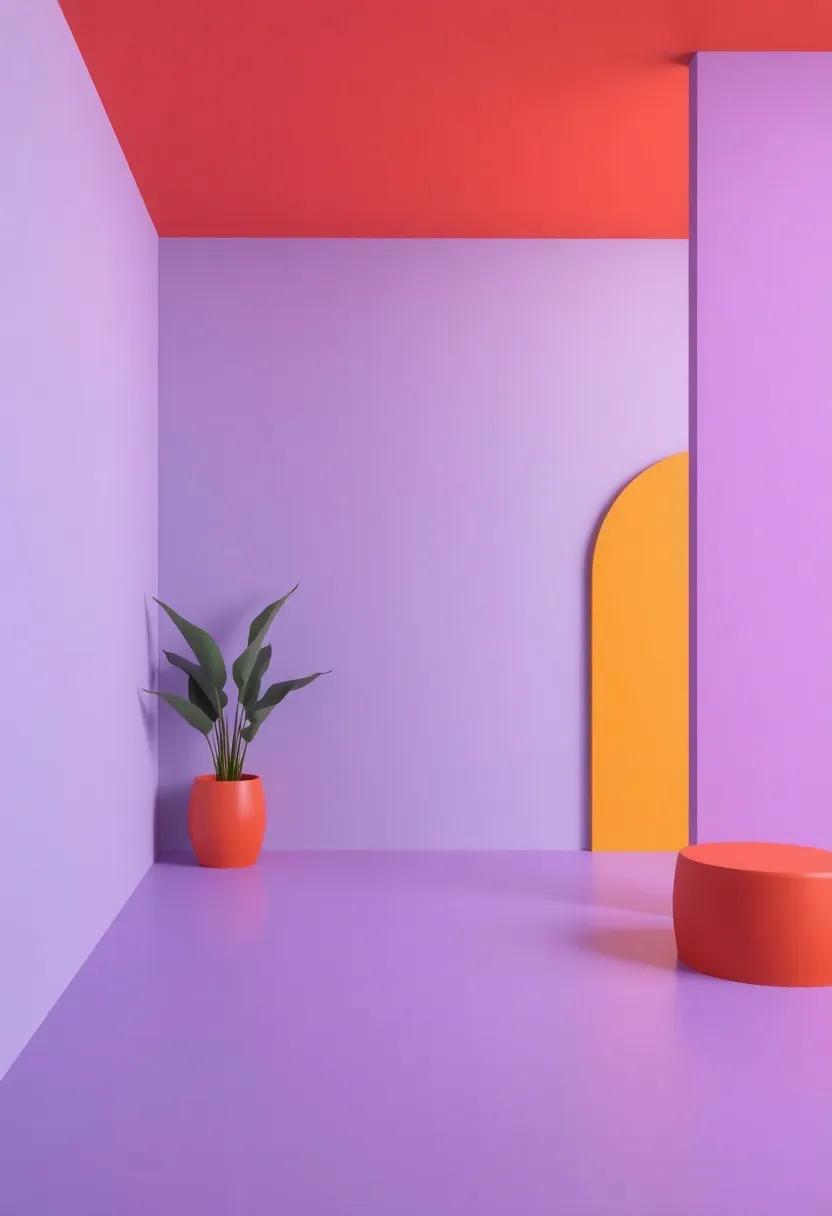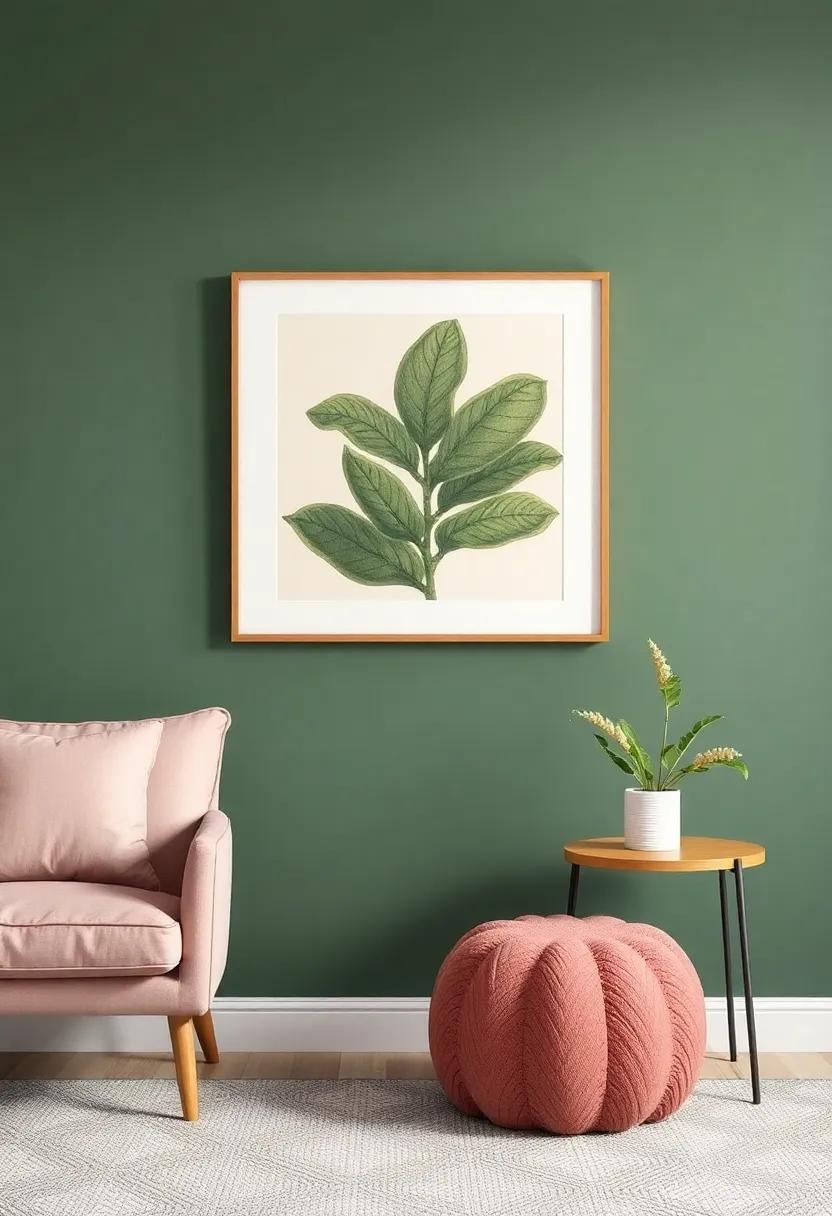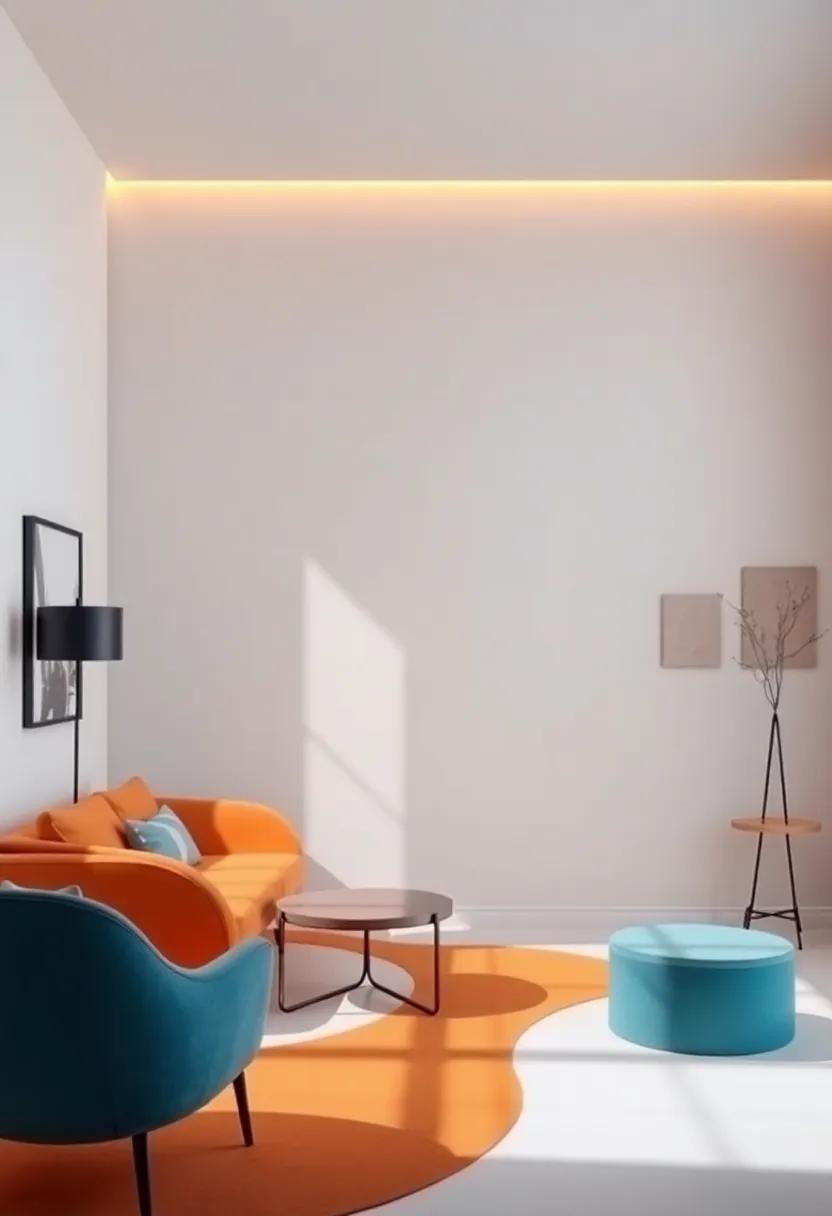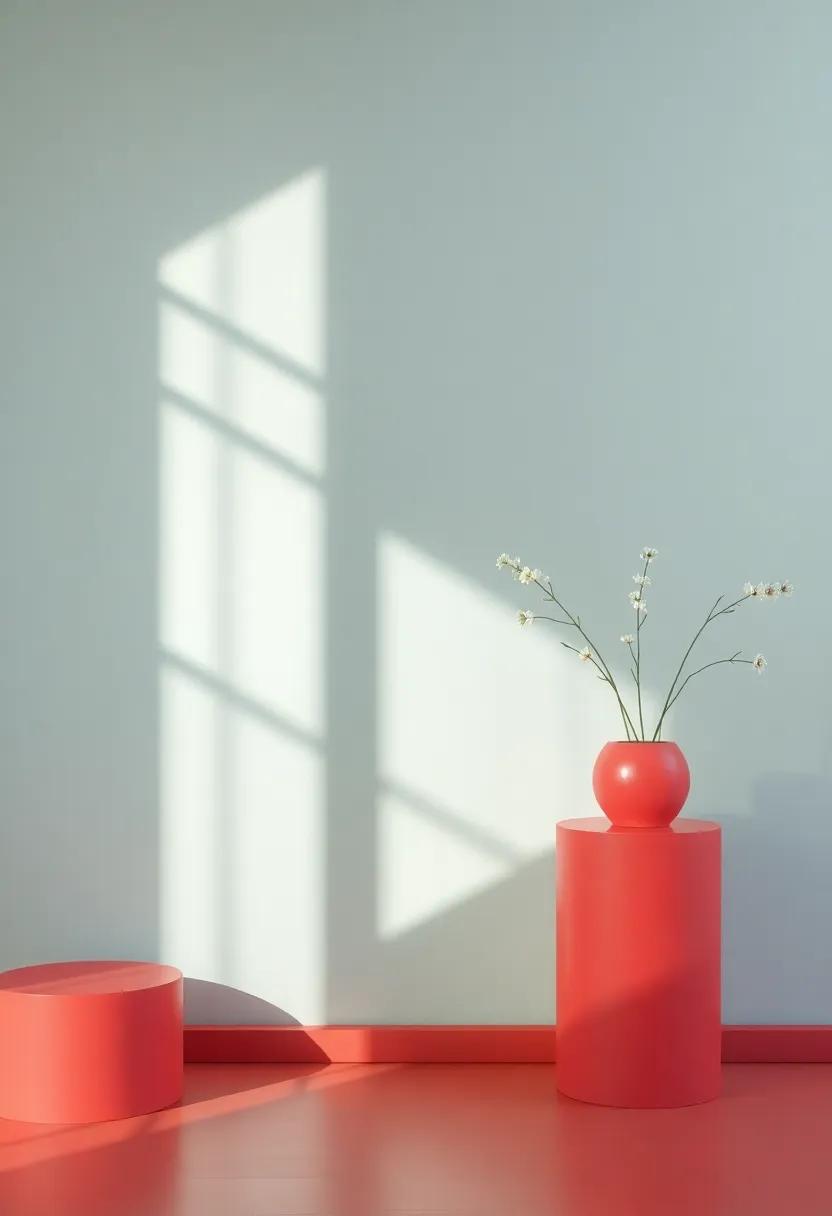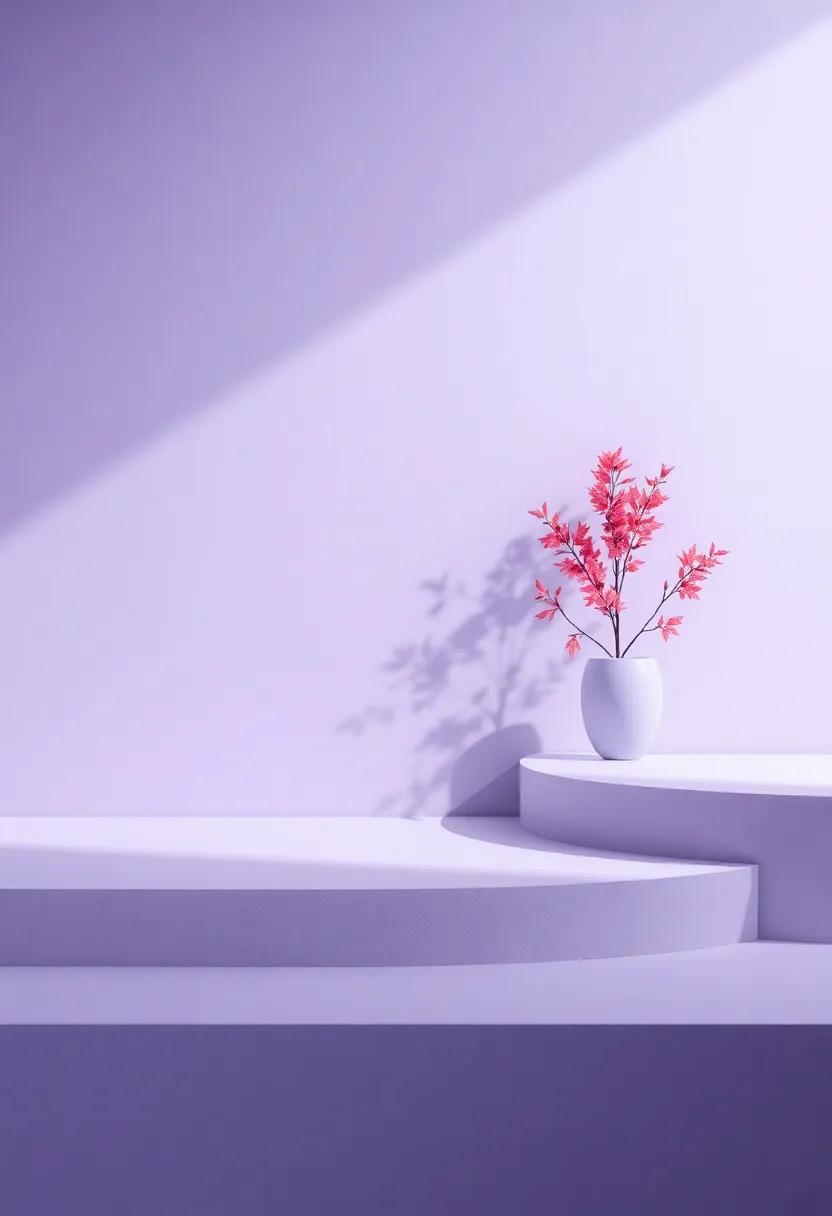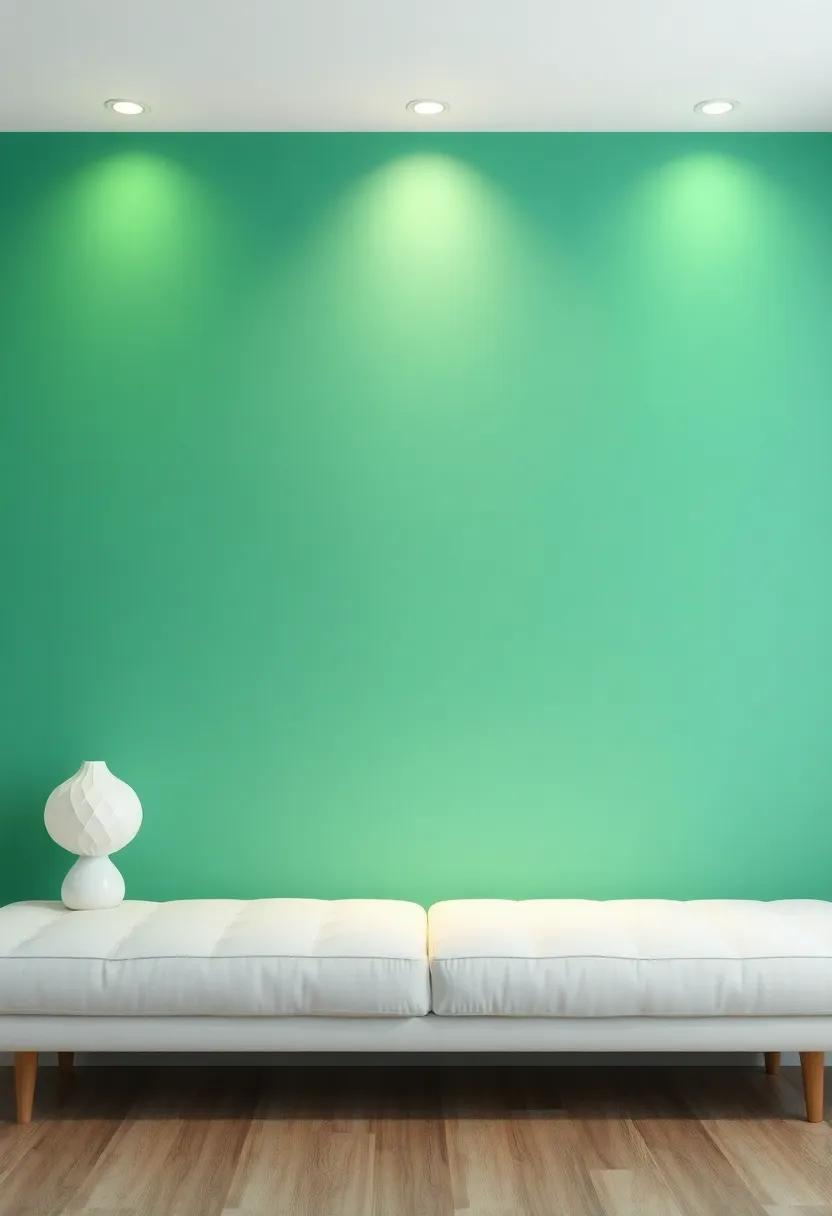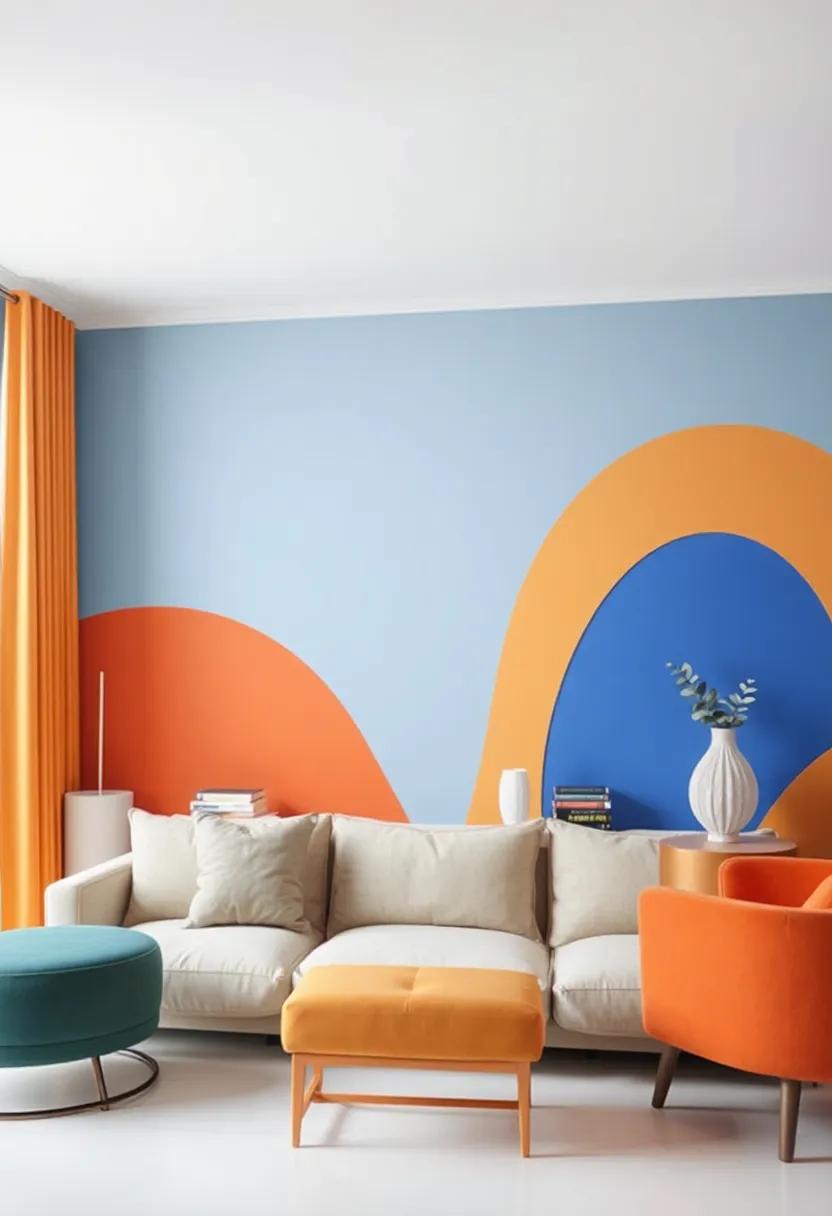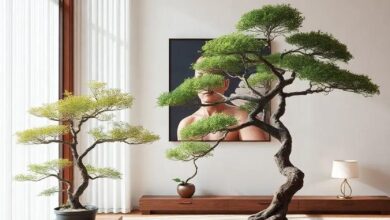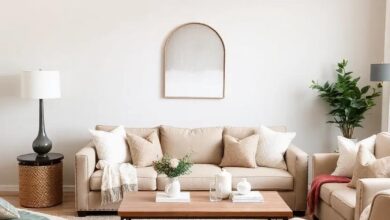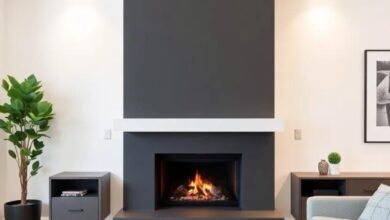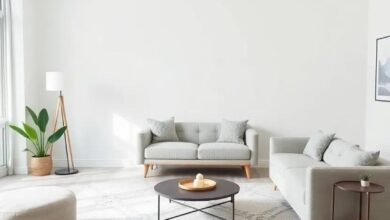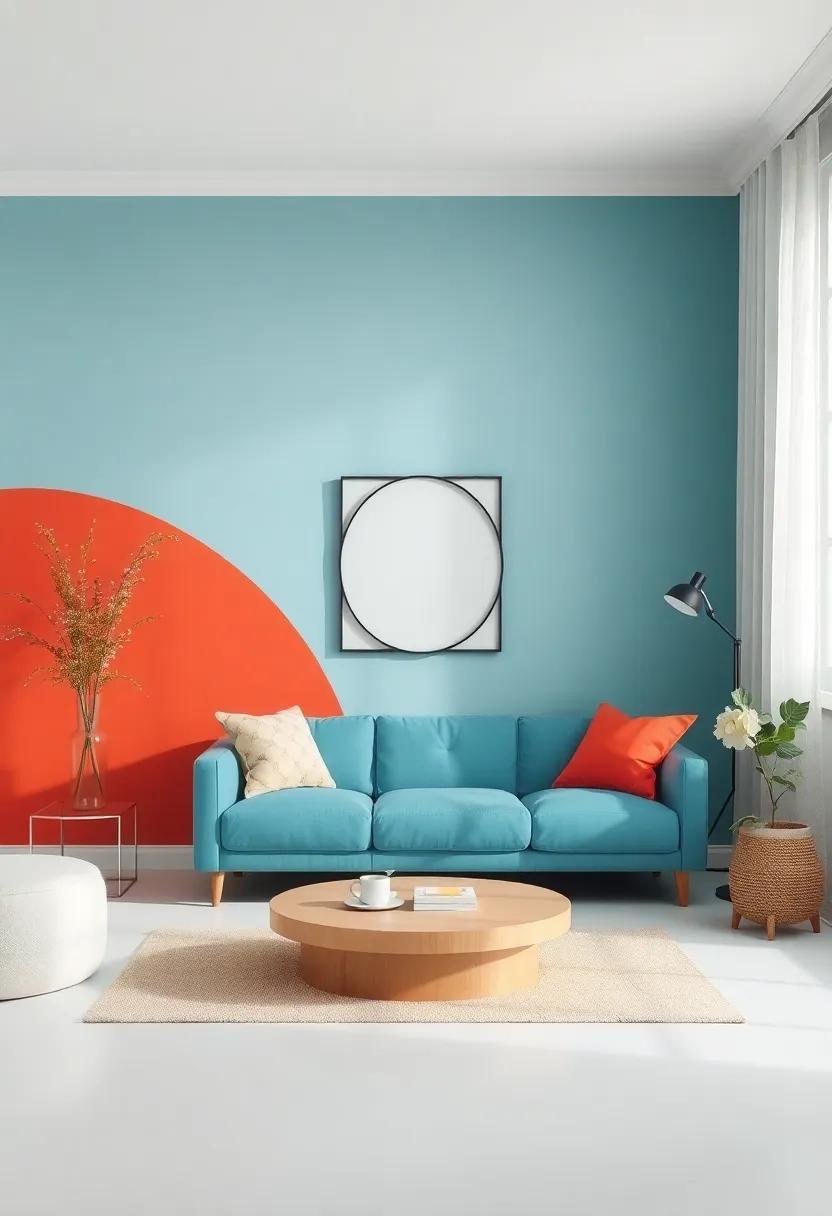
What to consider when painting accent walls in a bold color in your living room.
When it comes too transforming the ambiance of a living room, few design choices make as striking an impact as a bold accent wall. A splash of vibrant color can breathe life into a space,create focal points,adn express personal style. though, before you reach for that paint roller, it’s essential to carefully consider a myriad of factors that can influence the effectiveness of your bold choice. From the interplay of light and color to the relationship between surrounding furnishings and decor, each element plays a crucial role in ensuring that your accent wall complements rather than overwhelms. In this article, we will explore the key considerations to keep in mind when painting an accent wall in your living room, helping you navigate the exciting journey of color selection with confidence and creativity.
Choosing the Right Bold Color to Make Your Living Room Pop
When deciding on a bold color for your living room accent wall, consider the overall atmosphere you wish to create. Colors evoke emotions; as an example, reds can energize a space while blues offer a sense of calm. Here are some factors to keep in mind:
- Room Size: Lighter bold colors can visually enlarge smaller rooms, while darker shades add intimacy to larger spaces.
- Lighting: Test your chosen color at diffrent times of day. Natural light can shift tones, so evaluate how the color appears both in sunlight and artificial lighting.
- Furniture and Decor: Assess existing colors in your furniture and decor. Your accent wall should harmonize with or contrast effectively against these elements.
Another essential element is the cohesion of your color palette. A carefully curated mix ensures your bold choice stands out for the right reasons. consider creating a color scheme using the following:
| Color Type | Example Shades |
|---|---|
| Warm Tones | Coral, Mustard Yellow |
| Cool Tones | Turquoise, Deep Green |
| Neutrals | Charcoal, Soft Beige |
Mixing these shades can enhance the boldness of your accent wall while maintaining a balanced look. Engage in swatch comparisons and visualize the final result in your living space for the most satisfying outcome.
Understanding Color Psychology and Its Impact on Your Mood
When contemplating an accent wall,it’s essential to consider how different colors can shape the atmosphere of your living room and influence your mood. Bold hues can create dramatic impacts that stir various emotions. As an example, red is often associated with energy and excitement, making it perfect for social spaces, while blue exudes calmness and tranquility, favoring relaxation. If you desire to inspire creativity, consider a vibrant yellow; however, balance it with neutral tones to prevent overwhelming the space.
- Lighting: Natural light can alter how paint colors are perceived. Test swatches in different lighting conditions.
- Room Size: Bold colors can make small spaces feel cozier, while they might overwhelm larger rooms.
- Existing Decor: Ensure your chosen color complements existing furniture and artwork for a harmonious look.
It’s equally crucial to understand the psychological effects of color combinations. For example, pairing green with neutral grays can evoke feelings of balance and rejuvenation, while a union of purple and gold can convey luxury and creativity. Moreover, consider how these colors reflect your personality and lifestyle. If you thrive in vibrant environments, deep jewel tones like emerald or sapphire may resonate well with you. To visualize your choices, here’s a table categorizing color meanings and their emotional impacts:
| Color | Emotional Impact | Suggested Room Use |
|---|---|---|
| Red | Energy, Passion | Social Spaces |
| Blue | Calm, Serenity | Bedrooms |
| Yellow | Joy, Creativity | Studios, Play Areas |
| Green | Balance, Rejuvenation | Living Rooms, Offices |
| Purple | Luxe, Creativity | Accent Walls |
exploring the Relationship Between Bold Accents and Lighting
The interplay between bold accent colors and lighting is crucial in defining the atmosphere of your living room. when you select a vibrant hue for your accent wall, consider how natural and artificial light will interact with it. Natural light, for instance, can amplify the vibrancy of a bold shade during the day, making a room feel airy and alive. In the evenings, however, the same wall might appear darker or more subdued under warm artificial lighting. It’s important to experiment with different lighting options and intensities to see how they affect the perception of your chosen color. Color undertones can also be enhanced or muted depending on the light quality,which can dramatically shift the overall aesthetic of the space.
When creating a cohesive look, layering your lighting can complement the bold accent wall beautifully. Here are a few strategies to enhance this relationship:
- Incorporate Soft Lighting: Use floor lamps or table lamps with soft light bulbs to create a warm ambiance that highlights your accent color without washing it out.
- Use Spotlights: Strategic placement of spotlights can draw attention to the accent wall, making it a focal point while showcasing its depth and richness.
- Accent Lighting: Consider backlighting shelves or artwork on the accent wall to create a dramatic effect that enhances the bold color.
Consider the following table to visualize how different light sources can influence the appearance of your bold color:
| Lighting Type | Effect on Accent Wall |
|---|---|
| Natural Light | Enhances vibrancy and warmth |
| Soft LEAD Bulbs | Creates a cozy and inviting atmosphere |
| Cool White Lighting | May mute warmth,highlighting cooler undertones |
| Accent Spotlights | Emphasizes texture and character,adding drama |
Balancing Bold Colors with Your Existing Decor Elements
When introducing a bold accent wall into your living room, it’s essential to ensure that this vibrant choice complements your existing decor. Start by examining the hues within your current furnishings and decor. Consider the following:
- Primary Colors: Identify any primary colors in your decor and choose an accent color that either contrasts or harmonizes with them.
- Textile Patterns: Take a look at pillows, rugs, and curtains. Bold accent colors often work well with neutral patterns.
- Natural Light: Assess how much natural light your space receives, as it can change how the paint color appears throughout the day.
Moreover, ensure that your choice of bold color adds character without overwhelming the space. A palette that blends a few complementary elements can create a cohesive feel. Use the table below to help visualize potential combinations:
| Accent Color | Complementary Elements |
|---|---|
| Deep Navy | Golden Accents, Warm Woods |
| Vibrant Coral | Muted Grays, Natural Textures |
| rich Emerald | Earthy Tones, Creams |
Coordinating Furniture Colors for a Harmonious Living Space
Creating a cohesive and inviting atmosphere in your living room starts with recognizing how colors interact with each other. When opting for a bold accent wall, consider the following elements to harmonize the space:
- Color Wheel Basics: Use complementary or analogous colors to create balance. As an example, a vibrant blue wall pairs well with soft yellows and whites.
- Furniture Selection: Choose furniture that either echoes the wall color or brings in contrasting tones. A deep navy accent wall could be beautifully complemented with light wood or upholstered pieces in neutral shades.
- Texture Matters: Different materials and finishes can enhance the visual appeal. Glossy finishes on a bold color can add character, while matte can soften the overall look.
Additionally, the placement of furniture and decor plays a crucial role in emphasizing your chosen wall color. Keep in mind:
- Visual Weight: Balance heavy furniture pieces with lighter decor items to prevent the space from feeling top-heavy.
- Layering Colors: Introduce decorative pillows, throws, and artwork that include tones from your accent wall to tie everything together.
- Natural Light: Observe how the accent wall changes with different lighting throughout the day. This can guide your decisions on furniture colors and placement.
Creating Contrast: Pairing Bold Walls with Neutral Furnishings
When infusing your living room with an accent wall in a bold color, the key to achieving a harmonious look is pairing it with neutral furnishings. This approach allows the vibrant hue to take center stage while maintaining a balanced atmosphere. Consider using light-colored fabrics and finishes to help ground the space, such as:
- Beige or cream sofas
- light gray armchairs
- Wooden coffee tables with a natural finish
To further enhance the contrast, think about incorporating textures that create interest without overwhelming the senses. Items like a soft area rug, smooth leather cushions, or woven throws can elevate the aesthetic while keeping the focus on your bold wall. Don’t forget to introduce some decor accents in muted tones that complement the wall color while providing continuity throughout the room. A straightforward way to visualize your choices is through a simple comparison table:
| Furnishing Type | Suggested Color |
|---|---|
| Sofa | Beige |
| Armchair | Light Gray |
| Cushions | Muted Pastels |
Consideration of Wall Texture and Its Effect on Color Perception
The texture of the wall where you intend to apply a bold color can considerably alter the way that hue is perceived in your living space. Smooth surfaces reflect light differently than textured walls, which can create variations in color intensity and depth. As a notable example, a matte finish on a rough wall may absorb more light, making the color appear darker and possibly more subdued, while a glossy finish on a smooth surface can amplify brightness, enhancing the vibrancy of the shade. Consider how the texture interacts with both natural and artificial lighting throughout the day to achieve the desired impact.
When choosing your wall texture, keep in mind the following points to optimize color perception:
- Finish Type: Glossy finishes can lend a sense of luxury and brightness, while matte emphasizes depth and warmth.
- Material Consideration: Textured materials like stucco or brick can soften bold colors, creating a cozy, inviting atmosphere.
- Light Effects: Textured walls can cast shadows that might alter the appearance of your chosen color, so testing swatches under different lighting is essential.
Assessing the Size of Your Room for the Right Color Choice
Choosing the right bold color for your accent wall is greatly influenced by the size of your living room. Larger spaces often provide more possibility to play with deep, vibrant colors that can create a dramatic effect, showcasing your style while maintaining harmony with the rest of the room’s decor. In contrast, smaller rooms can appear closed in if painted in excessively dark shades. Instead, you might consider colors that are richer but with a muted undertone, allowing the space to feel open yet inviting. Some options to explore include:
- Soft charcoal – Adds depth without overwhelming.
- Rich Navy – A refined choice that can create a cozy nook.
- Earthy Greens – Brings a sense of nature and serenity.
Moreover, it’s crucial to consider the natural light available in your room. Rooms with abundant natural light can handle bolder and darker colors more effectively. In contrast, dimly lit spaces might benefit from brighter shades that reflect available light and create an illusion of a larger room. Here’s a simple breakdown of how light can affect your color choice:
| Lighting Condition | Recommended Color Choices |
|---|---|
| Radiant Natural Light | Deep blues, Vibrant Reds, Bold yellows |
| Moderate Natural Light | Soft Grays, Warm neutrals, Muted Jewel Tones |
| Low Natural Light | Light Pastels, Bright Whites, Warm Creams |
Using Bold Colors to Highlight Architectural Features
when considering the application of bold colors on an accent wall, think about the architectural features you want to highlight. Rich, vivid hues can draw attention to unique structural elements such as columns, archways, or built-in shelves. By selecting a color that contrasts with the surrounding walls, you create a striking focal point that can transform the atmosphere of the room.Consider the following aspects:
- Lighting: Natural and artificial lighting can alter the perception of color.
- Room Size: Lighter shades may make a small room feel larger, while deep colors can create intimacy.
- Complementary Decor: Ensure that furniture and accessories complement the bold choice.
A strategic use of bold tones can also define different areas within an open floor plan, providing a visual distinction without the need for physical barriers. To effectively implement a bold accent wall, utilize a color that resonates with the overall theme of your living space. Experiment with different finishes, such as matte or glossy, to enhance the texture of the wall. Here’s a fast comparison of popular bold colors:
| Color | Effect | Best For |
|---|---|---|
| Deep Blue | Calming, sophisticated | Modern and nautical themes |
| Fiery Red | Passionate, energetic | Dynamic and vibrant spaces |
| Bright Yellow | Cheerful, inviting | Cozy and warm areas |
Selecting the Ideal Paint Finish for a Striking Accent Wall
When choosing the right paint finish for your accent wall, consider how the sheen can enhance the overall ambiance of your living room. A matte finish is perfect for creating a cozy, understated backdrop, allowing the bold color to speak for itself. Meanwhile, a glossy finish can reflect light beautifully, making the accent wall a vibrant focal point that draws the eye. Remember to think about the effect of light in the room: the finish will interact with natural and artificial lighting, creating different moods throughout the day.
Moreover,practicality should influence your choice of finish.High-traffic areas may benefit from a satin or eggshell finish, which offers durability and is easier to clean, making it ideal for family spaces. Consider these options:
| finish Type | Best For | Characteristics |
|---|---|---|
| Matte | Low-traffic areas | Soft, non-reflective, hides imperfections |
| Satin | Moderate traffic | soft sheen, durable, easy to clean |
| Eggshell | Living rooms | Elegant finish, slight sheen, washable |
| Glossy | Focal points | Bold, reflective, vibrant |
Planning the Accent Wall’s Location for Maximum Impact
When selecting the position for your accent wall, it’s essential to consider the room’s layout and flow.Focus on focal points, such as a fireplace, large piece of artwork, or a prominent piece of furniture. This location not only draws the eye but also creates a natural balance in the space. Additionally, examine how light interacts with different walls throughout the day. A wall that receives ample natural light can enhance the vibrancy of your chosen bold color, helping it resonate without overwhelming the room.
Another vital aspect is the size of the wall, especially in relation to surrounding furniture and decor. Take time to visualize how the chosen color will interplay with existing elements. Consider the following before making your final decision:
- Adjacent Colors: Ensure complementary colors are present in artwork,furniture,or accessories.
- Room Function: Take into account how the space will be used, as some colors can evoke different moods.
- Visual Balance: Strive for harmony by choosing walls that avoid overwhelming the other elements.
To help visualize your options, here’s a simple overview of popular accent wall placements:
| Location | Impact | Considerations |
|---|---|---|
| Behind the Sofa | Creates a striking backdrop | Ensure harmony with decor pieces |
| Fireplace Wall | Enhances the natural focal point | Pick colors that complement fire tones |
| TV Wall | Defines entertainment space | Choose shades that won’t reflect on screens |
| Entryway Wall | Welcomes guests with personality | Consider dimensions for wide appeal |
Visualizing Different Bold color Combinations in Your Space
Choosing a bold color for your accent wall can create a dynamic focal point in your living room, but it’s essential to visualize how it interacts with your existing decor. Consider the undertones of your selected shade and how they harmonize with the room’s overall palette. For instance, a vibrant teal can pair beautifully with warm wooden tones, while a rich maroon may complement cooler gray hues. To help you visualize, here are some popular bold color combinations to consider:
- Emerald Green with neutral tones like beige and soft white.
- Cobalt Blue alongside sandy yellows and light grays.
- Burnt Orange to contrast against white or pale blue furnishings.
To create a cohesive look, think about integrating the bold accent color throughout the space. This can be achieved by incorporating decor elements such as cushions, artwork, or throw blankets that echo the accent wall’s shade. A simple table can illustrate how various bold colors create different vibes in your living room:
| Accent Color | complementary Colors | Room Vibe |
|---|---|---|
| mustard Yellow | Charcoal Gray, White | Warm and Inviting |
| Ruby Red | Cream, Soft Black | Elegant and Cozy |
| Peacock Blue | Soft Pink, Neutral Tan | Fresh and Contemporary |
Integrating Artwork and Accessories with Bold wall Colors
when embracing bold wall colors, the challenge frequently enough lies in harmonizing them with artwork and accessories. to create a seamless integration, consider selecting pieces that share a common element, whether it’s a complementary color or an echoing theme.As a notable example, gold or silver accents in frames can elevate the visual appeal of vibrant walls, while plainer frames may allow the wall color to take center stage. Aim for a curated look by choosing artwork that reflects the emotions of the room, such as abstract designs to evoke energy or serene landscapes to promote calmness.
In addition, the choice of accessories can significantly impact the overall aesthetic. Think about incorporating decorative items such as vases, cushions, and throws that either contrast or complement the wall color. An effective approach is to use a simple formula for selecting accessories: Ensure that at least one color from the wall is represented throughout your accessories. A mix of textures—like the softness of textiles against the smoothness of painted surfaces—also contributes to depth. Here are some suggestions for integrating accessories:
- Textures: Use a combination of soft fabrics and sleek metals.
- Patterns: Layer different patterns that include elements of the wall color.
- Shapes: Include varied shapes through sculptures and decorative bowls to create visual interest.
Creating a Cohesive flow Between Rooms with Accent Colors
When choosing accent colors to create a harmonious flow between rooms,it’s essential to consider how these hues interact not just within the living room,but also in adjoining spaces. A bold accent wall can serve as a stunning focal point, but its effectiveness relies heavily on its relationship with surrounding colors. To ensure cohesion, select a color palette that complements the base hues of adjacent rooms. This might include using variations of the same color or picking shades that are found in textiles or artwork throughout the home. Consider these key elements:
- Color Wheel Harmony: look for complementary or analogous colors to ensure visual continuity.
- Textile Trends: Incorporate the accent color in fabrics like cushions or curtains to tie the look together.
- Light Reflection: Different wall colors react uniquely to light; pay attention to how the accent wall looks in varying lighting conditions throughout the day.
Another factor to keep in mind is the scale and design of your space. An accent wall should enhance the room’s architecture rather than overwhelm it. If the adjoining room has a lot of natural light, consider a darker accent that brings warmth to the space. Conversely, in a space that lacks sunlight, a vibrant, lighter accent color can make the area feel more inviting.A thoughtful application of accent colors can unify design motifs.Use the table below to analyze potential color pairings:
| room Type | Accent Color | Complementary Shades |
|---|---|---|
| Living Room | Coral | Soft Gray,Crisp White |
| Dining Area | Deep Blue | Mustard Yellow,Olive Green |
| Bedroom | Pale Mint | Warm Beige,Rosemary Green |
The Role of Natural Light in Enhancing Bold Wall Shades
Natural light plays a crucial role in how bold wall shades are perceived within your living space. The way sunlight filters through windows can dramatically alter the appearance of colors, transforming a deep navy into a serene, almost soft hue during the day, while at night, it might reveal its robust character under artificial lighting. When selecting a bold color for your accent wall, it’s essential to consider the direction of your windows. Such as:
- North-facing rooms tend to receive cooler, softer light, which can mute strong colors, making them appear less vibrant.
- South-facing rooms bask in warm, direct sunlight, enhancing the richness of bold shades and allowing them to reach their full potential.
- East and West-facing spaces experiance changing light throughout the day, creating dynamic moods. Understanding these variations helps in choosing the right tone for your accent wall.
Moreover, the interplay between natural light and bold colors can create a unique atmosphere in your living room. it’s not just about picking a color you love; it’s also about how that color interacts with the light at different times of the day. To enhance the visual impact of your chosen shade, consider pairing it with strategic lighting options:
| Lighting type | Effect on Bold Colors |
|---|---|
| Natural Light | Enhances color vibrancy |
| Warm LED Lights | Adds warmth, softens edges |
| Cool LED Lights | Emphasizes boldness, can appear stark |
By thoughtfully assessing these factors, you can create a harmonious relationship between your bold accent wall and the natural light that floods your living room, ensuring your space feels both inviting and energizing.
incorporating Patterns and Textures Alongside Bold Accents
When incorporating bold accents in your living room, consider the visual interplay between patterns, textures, and those striking hues. To create a harmonious balance, you can mix geometric patterns with organic textures. As an example, a textured fabric like velvet on cushions can soften the impact of a graphic, angular-patterned rug. This layering not only adds depth but also invites touch, making your space feel inviting. Remember to choose a color palette that complements your bold accent wall—for example, if your wall is a daring navy, accents in softer shades like light blue or warm grays can provide a soothing contrast.
Additionally, integrating elements like artwork and decorative items will enhance the overall aesthetic. Consider displaying a collection of framed prints with various motifs that echo your bold wall color. Textured wall hangings or woven baskets can further enrich the space. You might also coordinate furniture finishes, allowing materials such as wood, metal, or glass to interplay against the dynamic wall. Here’s a quick reference table to guide your selection of patterns and textures:
| Element | Suggested Pairings |
|---|---|
| Geometric Patterns | Solid fabrics, smooth finishes |
| Floral Textures | Bold prints, natural materials |
| Stripes | Curved shapes, plush textiles |
Understanding the Importance of Color Samples Before Committing
Choosing a bold color for your living room accent wall can be exhilarating, but it also comes with its challenges.Color samples are essential as they allow you to visualize how a particular hue will interact with your space under different lighting conditions. Before making your decision, consider the following benefits of testing samples:
- Lighting Variations: Colors can look vastly different in natural light versus artificial light. Testing samples in various settings helps you gauge this.
- Room Cohesion: Ensure that your chosen color complements your existing decor and furnishings.Samples help to visualize harmony between elements.
- Personal Preference: Sometimes, what seems appealing in a swatch might not translate well on a wall. Samples help clarify personal tastes.
Testing color samples can aid in eliminating regrets, saving time and money in the long run. To simplify your decision-making process, create a small table to help compare your options:
| Color | Best Lighting | Complementary Colors |
|---|---|---|
| Deep Blue | Natural Light | White, Gray |
| Vibrant Yellow | all Lighting | Blue, Green |
| Rich Red | Evening Light | Beige, Gold |
By taking the time to experiment with color samples, you empower yourself to select the perfect shade that enhances your living space, creating an inviting and aesthetically pleasing atmosphere.
evaluating Seasonal Changes and Their Effect on Color Choice
The changing of seasons brings not only variations in weather but also shifts in natural light and color perception within your living space. As sunlight filters differently throughout the year, it illuminates your living room in unique ways, affecting how colors are perceived. When choosing a bold accent wall color, consider the seasonal characteristics:
- Spring: Bright, lively hues can thrive, reflecting the resurgence of life and vibrancy.
- Summer: Richer shades paired with abundant sunlight can create a warm and inviting atmosphere.
- Autumn: Earthy tones resonate well, harmonizing with the natural palette in your vicinity.
- Winter: Deep, cozy colors can evoke comfort and warmth during the colder months.
In terms of color psychology, certain shades can enhance or diminish your mood based on their seasonal relevance. To illustrate the impact of color choices through the seasons, consider this table showcasing popular color choices and their effects:
| Season | Popular Colors | Psychological Effect |
|---|---|---|
| Spring | Pale Greens, Soft Blues | Renewal, happiness |
| Summer | Crisp Whites, Bright Yellows | Joy, Energy |
| autumn | Terracotta, Deep Reds | Stability, Warmth |
| Winter | Charcoal, Navy | Calm, Reflection |
Imagining a Versatile Accent Wall for Future Decor Adaptations
When envisioning an accent wall that can seamlessly adapt to future decor changes, consider colors that are both bold and versatile. A rich navy or deep emerald can serve as a striking backdrop, while still being adaptable enough to complement a variety of decor styles. When choosing your color, think about how it interacts with the light in your room—bold colors can transform in different lighting, showcasing nuances and depth. It’s also vital to keep your furniture and decor in mind; selecting shades that can harmonize with your existing elements can ease the transition as you refresh your living space.
In addition to color selection,think about how you might incorporate texture or patterns to add further interest without overwhelming the space. Here are some ideas to inspire your inventiveness:
- Stencils or Murals: Create a unique focal point that can be easily updated with a coat of paint.
- Wall decals: These can be removed and rearranged, providing flexibility as your style evolves.
- Wood Panels: Consider painted wooden slats or reclaimed wood for a rustic yet modern look.
Exploring these elements can definitely help craft an accent wall that not only makes a statement but also offers room for transformation as your personal style grows.Below is a simple comparison table of potential colors and their complimentary design elements:
| Color | Complementary Elements |
|---|---|
| Deep Blue | Gold accents, neutral furniture |
| Rich Green | Wood textures, earthy tones |
| Bold Red | White or gray furnishings, metallics |
Exploring the Benefits of a Bold Accent Wall for Small Living Rooms
Choosing to paint an accent wall in a bold color can completely transform a small living room,adding depth and personality. A well-selected hue can create a focal point that draws the eye, making the space feel more expansive and inviting. some of the key advantages include:
- Visual Interest: A striking color can break the monotony of neutral tones frequently enough found in small spaces.
- Highlighting Features: It can emphasize architectural details or decor elements you want to showcase.
- Setting the Mood: Different colors evoke various feelings—warm tones can create coziness, while cool tones may offer serenity.
Moreover, when paired with appropriate furnishings and decor, a bold accent wall can enhance the overall aesthetic. To maintain balance in a small living room, consider these tips:
| Tip | Description |
|---|---|
| Complementary Colors | Choose furniture and accessories that harmonize with your accent wall. |
| Lighting | Incorporate different light sources to highlight the wall’s color nuances. |
| Minimal Decor | Keep it simple to avoid overwhelming the space; let the wall be the star. |
Concluding Remarks
As you embark on the journey of transforming your living room with a bold accent wall, remember that the key to success lies in thoughtful consideration. Balance and cohesion with your existing decor, an understanding of light and space, and a well-honed vision of the atmosphere you want to create will guide you in making choices that resonate with your personal style. whether you lean toward deep, dramatic tones or vibrant hues, let your walls reflect your unique personality and taste. a bold statement is not just about color; it’s about creating a sanctuary that feels like home. Embrace the adventure, and let your creativity shine through each brushstroke. Happy painting!
As an Amazon Associate I earn from qualifying purchases.
